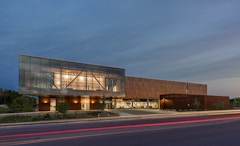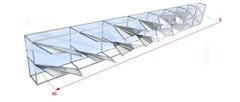
Environmentally Responsible Wood Cladding
This case study focuses on the solutions provided for the Bell Museum at the University of Minnesota. Our design team worked with the client to

This case study focuses on the solutions provided for the Bell Museum at the University of Minnesota. Our design team worked with the client to

The construction industry is one of the greatest sources of pollution, where 39% of global energy-related carbon emissions are attributed to

Urban noise pollution is a major environmental health problem. International organizations are making efforts to prevent health damage due to high
Sealed indoor environments have created artificial, homogeneous ecosystems that sever ties between humans and the natural world. This paper

Environmental and socio-economic benefits of sustainable preservation have become apparent most recently in the restoration of the historic former

Responsive shading systems can dynamically improve indoor environmental conditions based on outdoor climate variations. Among the technologies,

Buildings have a considerable impact on the environment, and it is crucial to consider environmental and energy performance in building design.

Designing a multi-functional building envelope as an architectural façade, environmental interface and solar collector is a multi-objective

Quickly exceeding new facade service life expectations for tall buildings imposed by increasing environmental, economic, and social pressures have



This study focuses on experiments in kinetics and architectural skins. More extensively, it introduces a solution for environmental design issues and

As architects and designers we understand the urgency of addressing the building sector’s role in the ongoing environmental crisis. Architecture2030

Life Cycle Assessment (LCA) is a methodology used to quantify the impact of building construction supply chains on the environment in terms of

Responsive facade system is considered a major component of high-performance building envelope that is capable of responding to environmental stimuli

Life cycle assessment was introduced in the 1970s as an analytical tool to quantify the environmental impact of a product, process, or service.

